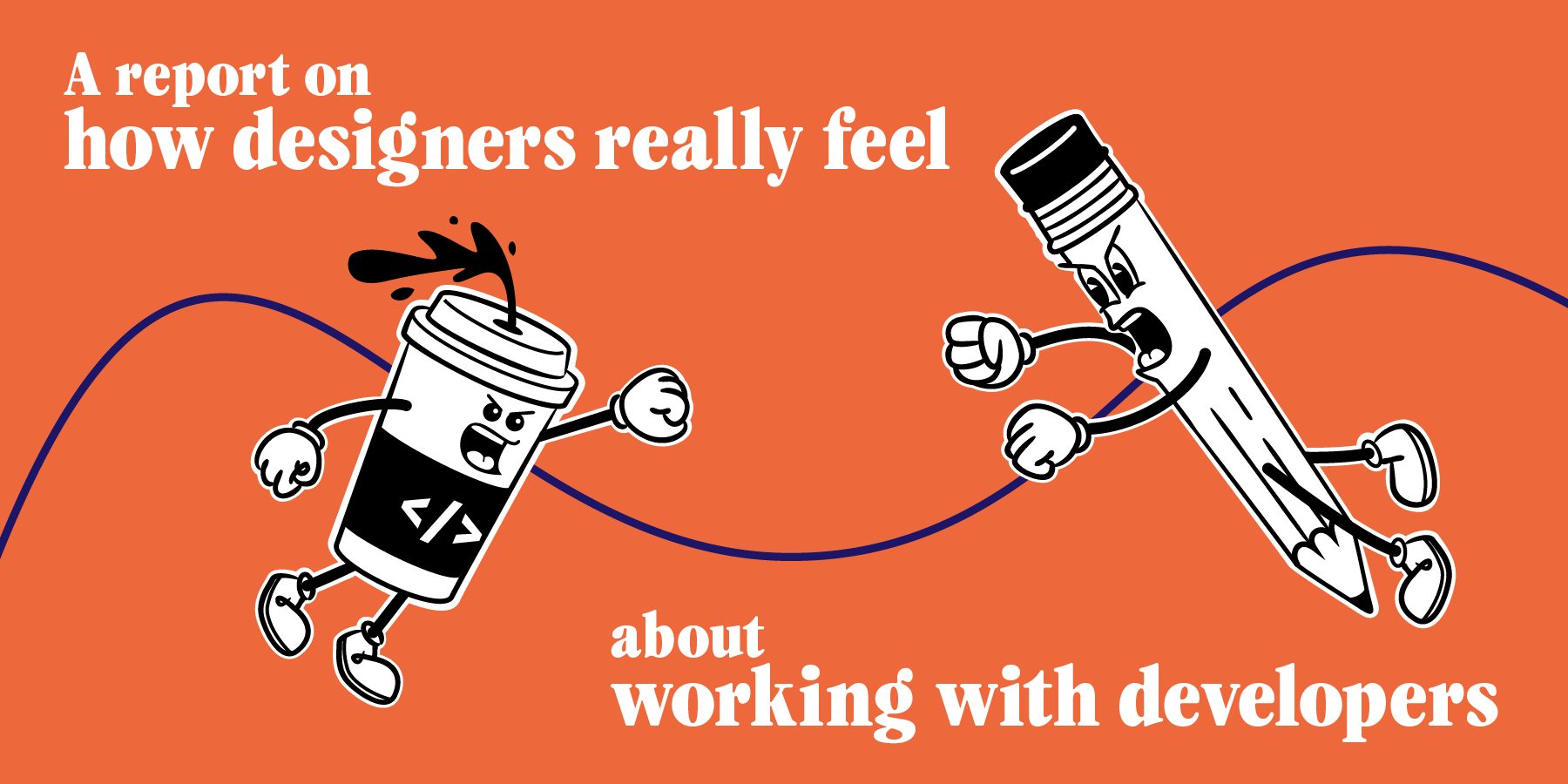
Designers and developers working together is like a buddy cop movie: they clash, things explode, and by the end they realize they’re on the same side.
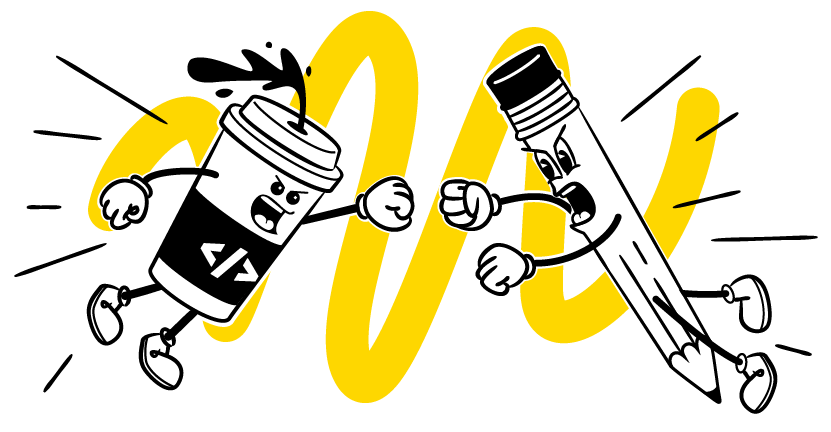
But neither designers nor devs want their relationship to be this dramatic.
In 2023, Figma asked 200 developers about why collaborating with designers isn’t always easy.
We wanted to hear the other side of the story.
So we asked 500 designers about the dynamics of their relationships with developers and what needs to change.
Here’s what we learned.
“Ah, the age-old tug-of-war between UX designers and frontend developers. It’s like watching two different artists fight over how to paint the same canvas.”
Shaheer Malik, Senior Product Designer, PureLogics

55% of designers think designers and developers are sometimes too different to work together well. And 36% said they’re always too different.
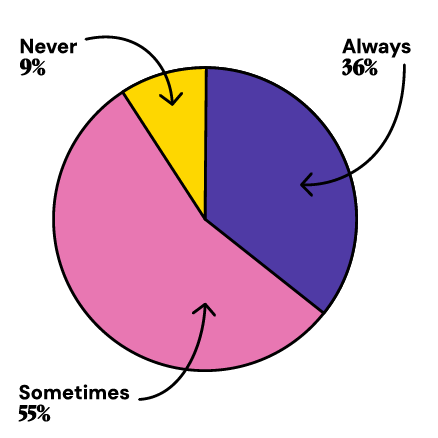
It seems that a lot of designers are resigned to never totally seeing eye to eye.
But why? We also asked what’s the #1 frustration of collaborating with devs, and the top response (45%) was different objectives, followed by different workflows (29%).
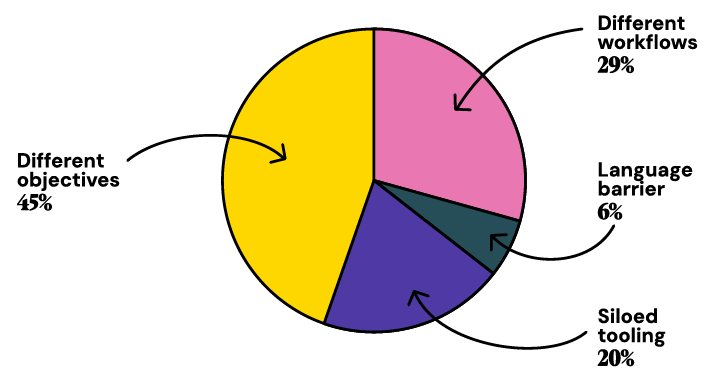
It’s hard to see eye to eye when you do different jobs with different priorities and schedules.
“A designer’s dream is a developer’s nightmare.”
Every designer and developer in the world

Despite finding some differences hard to reconcile, designers and developers are trying to work together well.
81% of designers said they feel developers understand and value their work.
57% said developers are very open to feedback from designers, and a larger proportion (72%) said designers are very open to feedback from devs.
It’s not perfect. 37% of designers said devs are a bit dismissive sometimes.
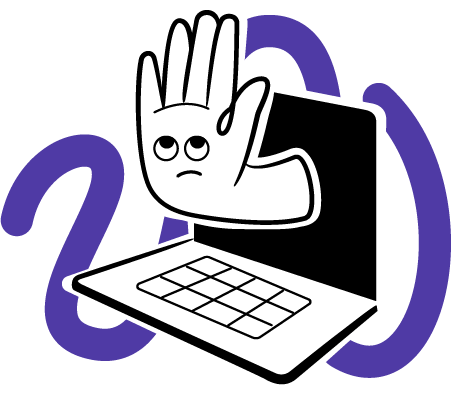
This comes back to different objectives and ways of working. Designers are creatives, limited only by their imagination. But developers must think about technical feasibility. They’re probably dismissive when a designer proposes something they don’t think will work.
Similarly, 24% of designers said they “try to be” open to devs' feedback, which suggests some aren’t always receptive to technical limitations being imposed by devs.
Reducing situations where designers propose things that obviously won’t work, and developers dismiss ideas instead of finding solutions, could be achieved by designers and developers learning what each other do.
But how much? In Figma’s survey, 91% of developers said designers should know how to code. We wanted to know if designers felt the same… and they do. 68% of designers think they should know how to code. So, designers feel less strongly than devs, but the majority still think it’s a good idea.
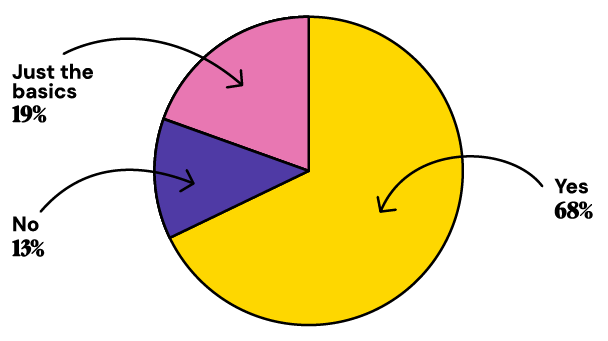
Something the Figma survey didn’t ask was whether developers should return the favor and learn how to design. We asked designers this question and 67% said yes.
It seems like a lack of understanding of the other side is what’s holding everyone back.
“There are often debates on whether ‘designers should learn to code.’ In reality, I think we all need to learn something of the language, skills, and priorities of the other people on our teams.”
Rachel Andrew, Developer Content Lead for Chrome, Google
We asked what could improve collaboration between designers and developers, and the most common response (39%) was devs learning design and designers learning code. Clearly most designers believe that the key to alignment is a better understanding of each other’s processes.
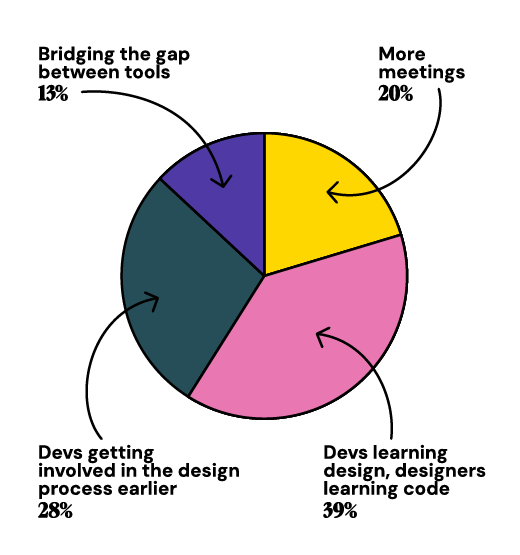
Clearly designers are a bit more divided on this question. 28% think devs getting involved in the design process earlier would help, while 20% think more meetings is the answer.
This indicates a bit of uncertainty about how best to bring the two teams together.

Only 13% of designers said that bridging the gap between tools could improve designer-developer collaboration.
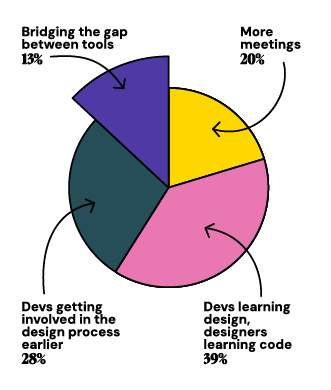
And only 20% cited siloed tooling as the #1 frustration of collaborating with devs.
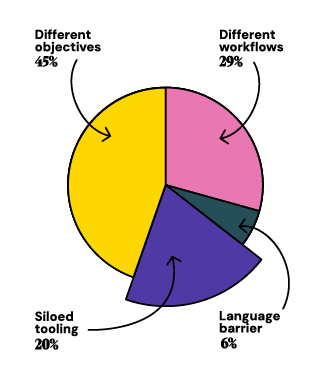
At the same time, when we asked if designers wished their devs worked in Figma dev mode, the most common answer (48%) was yes. That means they do see different tooling as a problem, and think the solution is getting devs to come into the design tool.
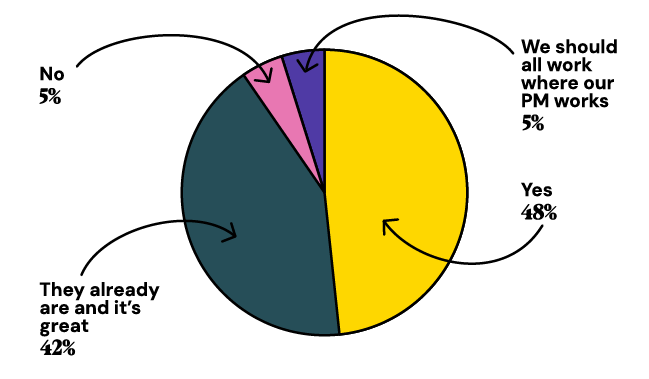
Also, 42% said their devs are already working in Figma dev mode, which could explain why a lot of respondents don’t see siloed tooling as a problem—because the devs have broken that silo by adopting Figma!
According to the developers surveyed by Figma, developer-designer partnerships are more effective if they collaborate daily.

We asked designers how they felt about communicating more frequently with developers and the majority (54%) said it would be helpful. However, 30% said it would be “ultimately worth it”, suggesting that even though it pays off in the end, more frequent communication can sometimes be a struggle.
This is consistent with most respondents (51%) saying that developers and designers should collaborate a few times during the project and only 34% saying they should collaborate daily. 12% think it’s only required at design handoff.
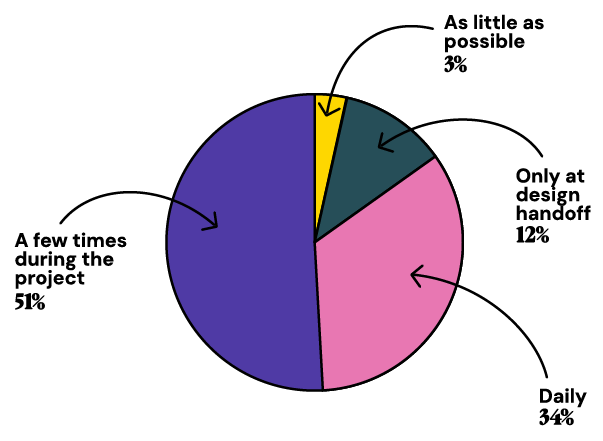
So, designers think there is such a thing as too much collaboration between the two teams. This is probably because they do completely different jobs and don’t want to be stepping on each other’s toes the whole time.
Interestingly some people advocate for a “no handoff” approach to creating and implementing designs. They say that iterating together on prototypes, with a constant back and forth between designer and developer, is more efficient and enjoyable.
We’re not sure designers agree.
“Like most things, collaboration is great in moderation. With too much too frequently, it's slowing us down and reducing our ability to get much needed focus time.”
Stella Garber, Co-Founder and CEO, Hoop.app
We asked designers how their businesses would benefit from better developer-designer collaboration. The biggest percentage (40%) think that better collaboration would lead to higher-quality products.
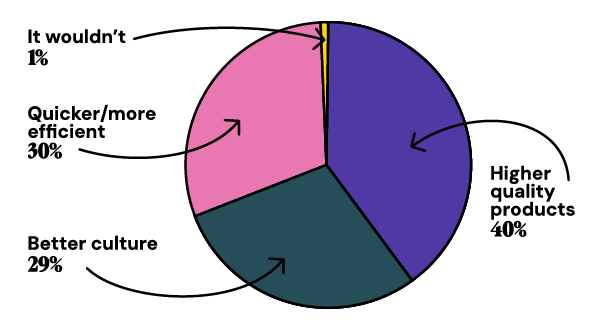
This corresponds to most designers (52%) saying that developers' implementations of their designs are just “good enough”. 26% said they get there eventually, after too much back and forth, and only 21% said they were pixel-perfect.
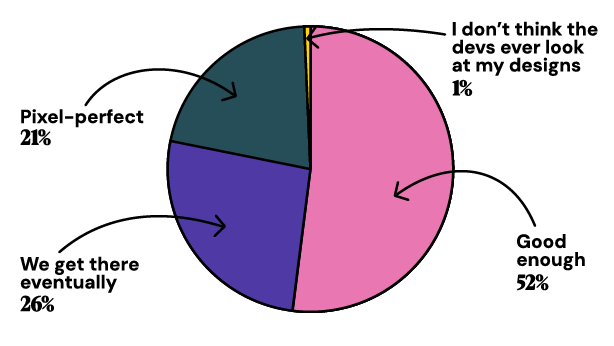
This indicates that there is work to be done. If the final build doesn’t match what designers intend, there’s been a compromise on usability, and it’s the customer who loses out.
“When both sides get it, we end up with something cohesive—a product that looks amazing and works like a dream.”
Nikhil Sharma, Head of Product Design, Airtel Payments Bank
Then maybe Figma dev mode isn't the right call. Integrate Confluence and Jira with your design and development tools and allow the two teams to collaborate in a neutral, central space.
With Figma for Confluence and Jira, you can:
Try Figma for Confluence Pro and Figma for Jira Pro free for one month.

CollabSoft conducted this survey in January 2025. We reached on to designers in LinkedIn, Slack, and Reddit groups and the response and completion rates were overwhelmingly positive. 500 designers completed the survey, with 86% of respondents from the USA, 9% from the UK, and 1% from the Netherlands.